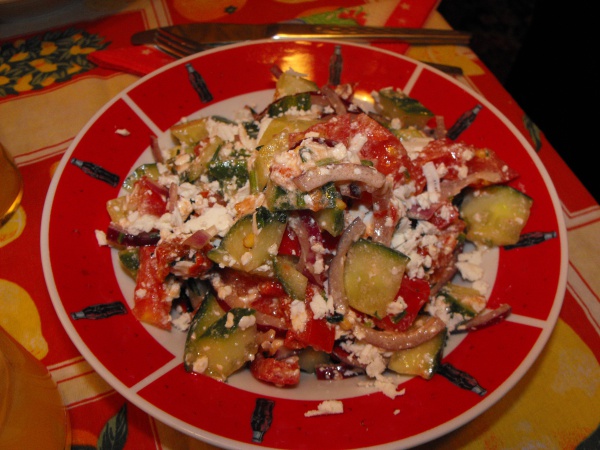Facts About Shopska salad
Shopska salad, often referred to as Macedonian salad, is a cherished cold dish that originates from Macedonia but has garnered admirers throughout the Balkans and Southern Europe. It is particularly renowned in Bulgaria, where it is revered as the national salad and a culinary icon.
The salad’s ingredients are selected to mirror the colors of the Bulgarian flag—red, green, and white—signifying national pride. The primary components include diced tomatoes, cucumbers, onions or scallions, raw or roasted peppers, sirene (a type of white brine cheese), and parsley. These vegetables are typically seasoned with a pinch of salt and dressed with sunflower or olive oil, occasionally finished with a splash of vinegar for added zest. A generous topping of grated or diced sirene cheese is commonly added. Shopska salad is usually served as an appetizer and is often accompanied by rakia, a popular local spirit.
Although the name "Shopska" derives from the Shopluk region, the salad was actually created around 1955 at a Black Sea resort near Varna, Bulgaria. Petar Doychev, a notable figure in Bulgarian tourism, is credited with its invention. Initially, it was part of a campaign to promote tourism in socialist Bulgaria. By the 1970s and 1980s, it had evolved into a national culinary symbol, expanding to neighboring countries and gaining popularity across Europe.
However, the salad's origin has sparked regional debates. Chefs in North Macedonia and Serbia have also laid claim to it, resulting in a culinary tug-of-war. In Romania, it is simply called Bulgarian salad. Despite these disputes, Shopska salad was honored in 2014 as Bulgaria's most iconic dish in Europe, winning the title under the European Parliament initiative A Taste of Europe.

 Romania
Romania